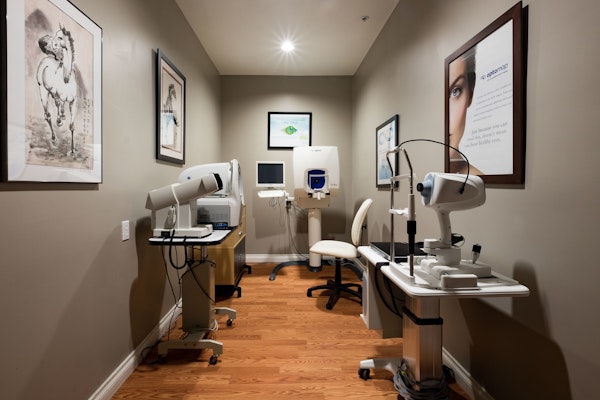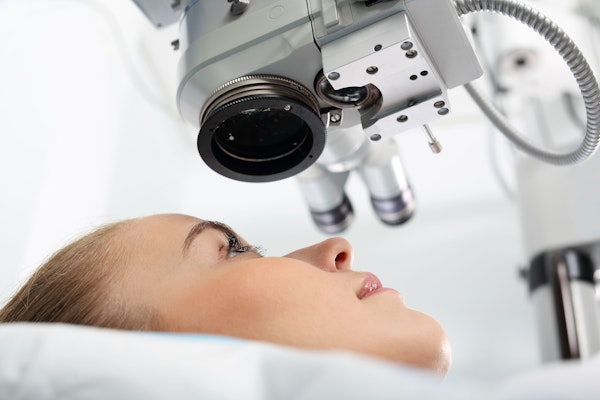
Crossed Eyes (Strabismus)
Crossed eyes can distort your vision and affect your ability to read or perform daily tasks. It can also take a toll on your self-confidence.
Also known as strabismus, crossed eyes is a condition in which the eyes do not point in the same direction at the same time.
How can you tell if you or your child has strabismus?

The Signs and Symptoms May Not Be Immediately Apparent
Eyes That Move Differently
Normally, both eyes move in unison. In the case of strabismus, one eye is weaker than the other, causing it to move in a different direction. The misaligned eye may point inward (esotropia), outward (exotropia), upward (hypertropia), or downward (hypotropia).
Inability to Determine Depth
To create relative depth perception, both eyes must work together. When your eyes do not aim at the same object simultaneously, it can result in partial or total loss of binocular depth perception.
Eye Strain and Headaches
Strabismus that is intermittent or alternating can result in headaches and eye strain, which can make it difficult to concentrate. It can also create unstable or "jittery vision."
Family History and Vision Conditions Play a Major Role
If your parent or sibling has strabismus, you are more likely to develop it yourself. In addition, severe, untreated farsightedness may result in strabismus because the eyes must work even harder intently to keep objects clear.
Three of the Most Common Causes of Strabismus
Refractive Errors
Though most cases of childhood strabismus are present at birth, crossed eyes can develop as a result of refractive errors such as hyperopia and presbyopia.
Neurological Conditions
Neurological or medical conditions that affect motor function can aggravate strabismus present since childhood or trigger its development in adults. These include cerebral palsy and stroke.
Eye, Brain, or Facial Trauma
Strabismus can develop when the muscles in the eye do not function properly. Facial trauma can interfere with the control of these six external muscles and result in strabismus.
"Two percent of children in the United States have strabismus. Half are born with the condition." Prevent Blindness
Most Forms of Strabismus Cannot Be Prevented
The only preventable type of strabismus is that caused by a severe refractive error. If you notice your child struggles to see properly, your doctor can prescribe eyeglasses to protect them from developing conditions like strabismus.
A Series of Quick and Painless Tests Can Diagnose Strabismus
| Test | Function |
|---|---|
| Hirschberg test | Evaluate eye alignment |
| Visual acuity test | Assess your ability to see distance |
| Cover/uncover test | Check for issues with eye movement |
| Retina exam | Look at the back of the eyes |
| Depth perception test | Determine the functionality of binocular vision |
| Vision screening system | Scan for strabismus |
Your doctor can perform many of these tests during a routine eye examination.

The results of these tests can help your doctor determine the presence and severity of your condition, as well as recommend the most appropriate form of treatment.
You Have Four Primary Treatment Options from Simple to Surgical
Eyeglasses and Exercise
Vision therapy in combination with strengthening exercises is an effective treatment for mild strabismus. Exercises like pencil pushups and barrel cards can improve eye muscle strength.
Botox (botulinum toxin)
For adults with strabismus, Botox® can be injected into the stronger eye muscles to relax them. This can level the playing field, enabling the weaker eye muscles to catch up.
Eye Patch
If you have developed a lazy eye as a result of misalignment, you may consider wearing an eye patch over your strong eye to strengthen the weaker one.
Surgical Solutions
An ophthalmologist can make a small incision in the ocular tissue to gain access to muscles beneath. They can then detach and reposition the muscles to correct the orientation of the eye.
Speak to a Doctor Today
Strabismus is considered a risk factor for amblyopia or “lazy eye,” the leading cause of vision loss among children. Diagnosing strabismus early can be key to less invasive and effective treatment. Speak with a doctor today to schedule a routine exam and protect your or your child's sight.







